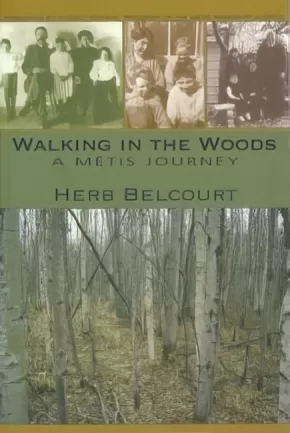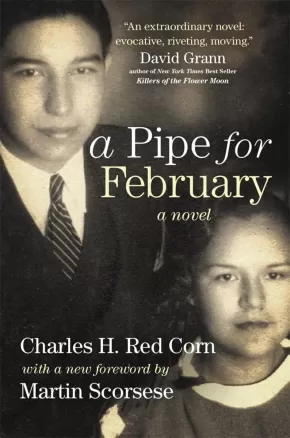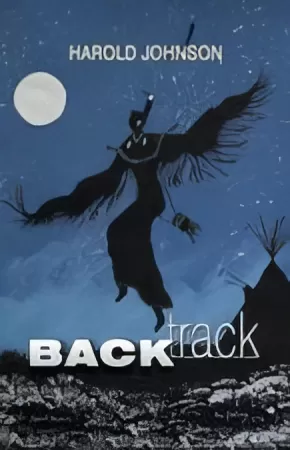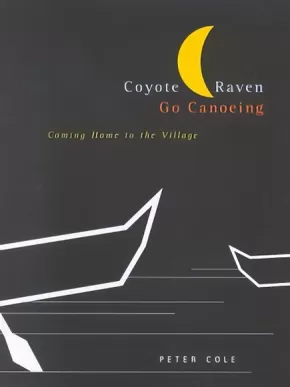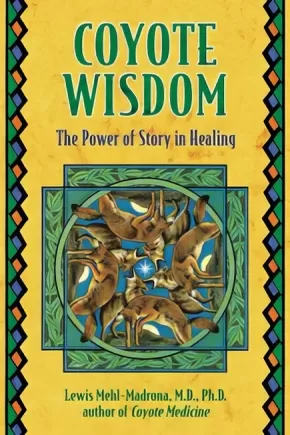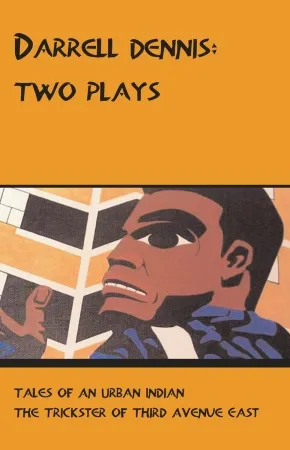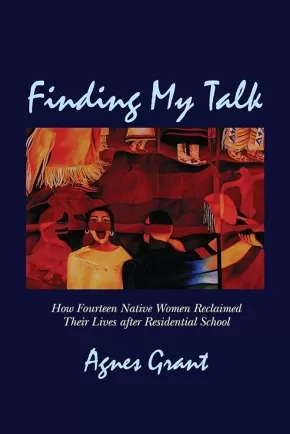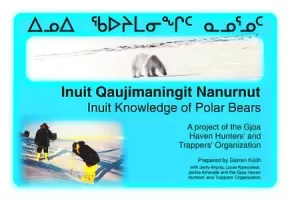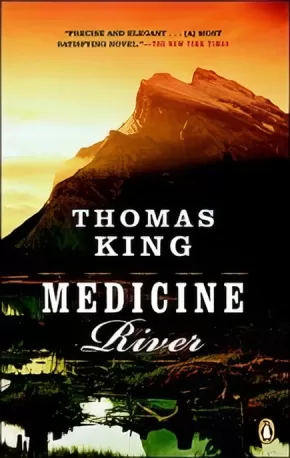Browse Books for Adults
Synopsis:
This amazing collection of vintage photographs and historical text presents an overall view of tipi life, from the painted tipis of the Blackfoot and Shoshone in the Southwest to Ojibwa hunting lodges in Canada. Includes instructions on how to construct a tipi.
Additional Information
112 pages | 9.28" x 7.51"
Synopsis:
Reflecting on his evolving identity as a human being, a Canadian and a Métis westerner, Herb Belcourt tells the remarkable story of one familys enduring connection to the dramatic history of western Canada. Belcourt traces his ancestry directly to an early French-Canadian voyageur and his Cree-Métis wife who lived in Ruperts Land after 1800. The eldest of ten children, Belcourt grew up in a small log home near Lac Ste. Anne during the Depression. His father purchased furs from local First Nations and Métis trappers and, with arduous work, began a family fur trading business that survives to this day. When Belcourt left home at 15 to become a labourer in coal mines and sawmills, his father told him to save his money so he could work for himself. Over the next three decades, Belcourt began a number of small Alberta businesses that prospered and eventually enabled him to make significant contributions to the Métis community in Alberta.
Suggested Grades: 9-12
ABPBC
Synopsis:
"A Pipe for February is an extraordinary novel: evocative, riveting, moving. Charles Red Corn illuminates what the Osage people went through during the 1920s, when oil profits had made them fabulously wealthy and when they began to die under mysterious circumstances—systematically targeted for their money. This novel, exquisitely written and filled with revelations, will hold you in its grip and never let you go.”—David Grann, author of New York Times Best Seller Killers of the Flower Moon
At the turn of the twentieth century, the Osage Indians owned Oklahoma’s most valuable oil reserves and became members of the world’s first wealthy oil population. Osage children and grandchildren continued to respect the old customs and ways, but now they also had lives of leisure: purchasing large homes, expensive cars, eating in fancy restaurants, and traveling to faraway places. In the 1920s, they also found themselves immersed in a series of murders. Charles H. Red Corn sets A Pipe for February against this turbulent, exhilarating background.
Tracing the experiences of John Grayeagle, the story’s main character, Red Corn describes the Osage murders from the perspective of a traditonal Osage. Other books on the notorious crimes have focused on the greed of government officials and businessmen to increase their oil wealth. Red Corn focuses on the character of the Osage people, drawing on his own experiences and insights as a member of the Osage Nation.
In the new foreword, director Martin Scorsese reveals how reading A Pipe for February helped him better understand the Osage people and bring Killers of the Flower Moon to the screen.
Reviews
"A Pipe for February is an extraordinary novel: evocative, riveting, moving. Charles Red Corn illuminates what the Osage people went through during the 1920s, when oil profits had made them fabulously wealthy and when they began to die under mysterious circumstances—systematically targeted for their money. This novel, exquisitely written and filled with revelations, will hold you in its grip and never let you go"—David Grann, author of Killers of the Flower Moon—a New York Times #1 bestseller—and award-winning staff writer at The New Yorker
“A Pipe for February subtly weaves together some of the richest themes of contemporary American Indian Literature.” —Robert Warrior, author of Tribal Secrets: Recovering American Indian Intellectual Traditions
Additional Information
284 pages | 5.50" x 8.50" | Paperback
Synopsis:
Against a backdrop of traditional Cree mythology, Johnson's novel creates a tangled murder chronicle and harrowing tale of four Cree brothers, bound to each other through family and tradition, separated from each other by their chosen life paths. As one brother kills, another reinforces the principle of a circle of life, as one capitulates to weakness, another conquers his demons. Driving the action is a manhunt for the killer of conservation officers; but at the heart of the story there is reparation through cultural wisdom and the restoration of traditional beliefs.
Authentic and well-paced, Back Track crosscuts through the cultural ruts, economic conventions, and stereotypes of Cree families living in northern Saskatchewan.
Additional Information
|
Synopsis:
A lyrical, epic narrative about Aboriginal knowledge and education.
we are narrators narratives voices interlocutors of our own knowings
we can determine for ourselves what our educational needs are
before the coming of churches residential schools prisons
before we knew how we knew we knew
In a gesture toward traditional First Nations orality, Peter Cole blends poetic and dramatic voices with storytelling. A conversation between two tricksters, Coyote and Raven, and the colonized and the colonizers, his narrative takes the form of a canoe journey. Cole draws on traditional Aboriginal knowledge to move away from the western genres that have long contained, shaped, and determined ab/originality. Written in free verse, Coyote and Raven Go Canoeing is meant to be read aloud and breaks new ground by making orality the foundation of its scholarship.
Cole moves beyond the rhetoric and presumption of white academic (de/re)colonizers to aboriginal spaces recreated by aboriginal peoples. Rather than employing the traditional western practice of gathering information about exoticized other, demonized other, contained other, Coyote and Raven Go Canoeing is a celebration of aboriginal thought, spirituality, and practice, a sharing of lived experience as First Peoples.
Reviews
Additional Information
352 pages | 7.00" x 9.50"
Synopsis:
An in-depth look at the therapeutic and transformative powers of storytelling in Native American and other cultures
• Explores how to create a healing state of mind using stories
• Includes healing stories from Native American traditions and other cultures from around the world
• By the author of the bestselling Coyote Medicine
Stories are powerful sources of meaning that shape and transform our lives. We tell stories to track our process of personal and spiritual growth and to honor and respect the journeys we have made. Through stories we are provided with experiences of spiritual empowerment that can lead to transformation.
In Coyote Wisdom, Lewis Mehl-Madrona explores the healing use of stories passed down from generation to generation in Native American culture and describes how we can apply this wisdom to empower and transform our own lives. A storytelling approach to transformation starts with how we were created and how we can re-create ourselves through the stories we tell. As we explore the archetypal characters and situations that populate the inner world of our stories, we can experience breakthroughs of healing and even miracles of transformation.
This approach to healing through stories runs counter to the current model of modern psychology. The stories we tell about ourselves may model our lives, but by introducing new characters and plots, we can come to see ourselves in a new way. The author also draws upon the cultures of other indigenous peoples--the Maori, East Africans, Mongolians, Aborigines, and Laplanders--to illustrate the healing use of stories throughout the world.
Synopsis:
Tales of an Urban Indian is a one-person play that follows the trials and tribulations of Simon Douglas, a young First Nations man who moves from his rural reservation to the big city of Vancouver. This dark comedy examines the issues of race, identity, and assimilation that drive young Indigenous men to self-destruction.
In The Trickster of Third Avenue East, Roger and Mary are spiralling out of control but are too scared to let each other go. Enter J.C., a mysterious visitor who turns their lives upside down and forces them to confront their darkest secrets. J.C. pushes Roger and Mary into the realm of the supernatural and past the brink of sanity.
Additional Information
134 pages | 5.45" x 8.40" | Paperback
Synopsis:
When residential schools opened in the 1830s, First Nations envisioned their own teachers, ministers, and interpreters. Instead, students were regularly forced to renounce their cultures and languages and some were subjected to degradations and abuses that left severe emotional scars for generations. In Finding My Talk, fourteen aboriginal women who attended residential schools, or were affected by them, reflect on their experiences. They describe their years in residential schools across Canada and how they overcame tremendous obstacles to become strong and independent members of aboriginal cultures and valuable members of Canadian society. Biographies include: Eleanor Brass, Journalist, Plains Cree, Saskatchewan, Rita Joe, Poet/Writer, Mi?kmaq, Nova Scotia, Alice French, Writer, Inuit, Northwest Territories Shirley Sterling, School Administrator/Storyteller, Nlakapmux, British Columbia, Doris Pratt, Education Administrator/Language Specialist, Dakota, Manitoba, Edith Dalla Costa, School Counsellor, Woodland Cree, Alberta, Sara Sabourin, Community Worker, Ojibway, Ontario. Dr. Agnes Grant worked with the Native Teacher Training programs at Brandon University, Manitoba, for thirty years. As an administrator and professor, she spent much of her time in remote communities. Dr. Grant is the author of No End of Grief: Indian Residential Schools in Canada and three other books. She lives in Winnipeg.
Authenticity Note: This book has received the Authentic Indigenous Text label because of the contributions of the fourteen Indigenous women who share their stories in it. It is up to readers to determine if this will work as an authentic text for their purposes.
Synopsis:
Fingerweaving has been practiced by Native Americans for centuries. It requires no sophisticated loom, only the nimble hands of the weaver. Each technique is presented in detail. The instructions are simple and clearly written, and each step is illustrated with color drawings that make the different threads easy to identify. Includes a color photo of each finished weaving. The approach used here makes this craft much more accessible to amateurs who may have wanted to try it but may have been turned off by the complexity of other books on the subject. Several variations are given for chevron stitch, lightning pattern, arrowhead pattern, bead accents, and fringe.
Synopsis:
This introductory field guide is designed for the beach explorer, the boater, the skin diver, and the scuba diver. Rick has limited its contents to the most common species, which can be seen from, or along, the seashore, or in the shallows. It's easy-to-spot features will guide the beginner into the wonderful world of the western seashore.
Additional Information
48 pages | 5.50" x 8.50" | coloured photos throughout.
Synopsis:
Following on two previous collections— Write It on Your Heart: The Epic World of an Okanagan Storyteller (1989) and Nature Power: In the Spirit of an Okanagan Storyteller (2004)—Living by Stories is the third volume of oral narratives by Okanagan storyteller Harry Robinson. This third collection documents how the arrival of whites forever altered the Salish cultural landscape.
Living by Stories includes a number of classic stories set in the “mythological age” about the trickster/transformer, Coyote, and his efforts to rid the world of bad people— spatla or “monsters,” but this new volume is more important for its presentation of historical narratives set in the more recent past. As with the mythological accounts, there is much chaos and conflict in these stories, mainly due to the arrival of new quasi-monsters—“SHAmas” (Whites)—who dispossess “Indians” of their lands and rights, impose new political and legal systems, and erect roads, rail lines, mines, farms, ranches and towns on the landscape.
With permission from Harry Robinson, Wendy Wickwire began recording Robinson's oral stories in 1977. Robinson took his role as a storyteller very seriously and worried about the survival of the oral tradition and his stories. “I’m going to disappear”, he told one reporter, “and there’ll be no more telling stories.”
Review
Whenever I need to be reminded that language is magic and that stories can change the world, I go to Robinson.
- Thomas King
Additional Information
288 pages | 6.00" x 9.00"
Stories from Harry Robinson
Edited and compiled by Wendy Wickwire
Synopsis:
Chief Seattle’s impassioned plea to respect “the sacred web of life” has become an inspiration to many. This thoroughly researched collection includes two popular 20th-century adaptations as well as a version of the speech that has been passed via the oral tradition among Suquamish elders from Chief Seattle’s tribe.
"A valuable reference for Native American history and for those interested in the ecological efforts to preserve harmony with the earth." —Kliatt magazine
Synopsis:
Passionate and engaging, Howard Adams: OTAPAWY! is an immense contribution to our knowledge of modern Métis political consciousness and activism. In addition to being Howard Adams’ own record of his remarkable life, the book also contains many contributions by those who were touched by him as a friend, colleague, mentor, activist, political leader, teacher, and scholar.
Augmented by an interactive CD-ROM containing dozens of photographs and documents relating to Howard Adams’ life and work.
Educator Information
Grade Level: Secondary/Post Secondary/Adult
Additional Information
310 Pages | Nonfiction
Synopsis:
Inuit have been hunting polar bear for centuries and have built up a rich knowledge about their habitat and behaviour-a knowledge expressed in the oral history, Inuktitut vocabulary and cultural traditions- in Inuit Qaujimaningit, or IQ. The Hunters' and Trappers' Organization of Gjoa Haven, Taloyoak, Kugaaruk and Cambridge Bay share concerns over the future viability of the polar bear population in the McClintock Channel Polar Bear Management Area and about the future integrity of the related IQ. The objective was to record and communicate, as accurately as possible, the IQ of Gjoa Haven residents related to polar bears. The lessons learned from this study will enable application as a model for studies of a similar nature elsewhere.
Synopsis:
When Will returns to Medicine River, he thinks he is simply attending his mother's funeral. He doesn't count on Harlen Bigbear and his unique brand of community planning. Harlen tries to sell Will on the idea of returning to Medicine River to open shop as the town's only Native photographer. Somehow, that's exactly what happens.
Through Will's gentle and humorous narrative, we come to know Medicine River, a small Albertan town bordering a Blackfoot reserve. And we meet its people: the basketball team; Louise Heavyman and her daughter, South Wing; Martha Oldcrow, the marriage doctor; Joe Bigbear, Harlen's world-travelling, storytelling brother; Bertha Morley, who has a short fling with a Calgary dating service; and David Plume, who went to Wounded Knee. At the centre of it all is Harlen, advising and pestering, annoying and entertaining, gossiping and benevolently interfering in the lives of his friends and neighbours.
Educator Information
Recommended Grades: 10-11
Grade 10/11 English First Peoples resource included in the unit Relationships - Families, Friendships, Communities, and the Land.
Additional Information
320 pages | 5.31" x 8.25"



